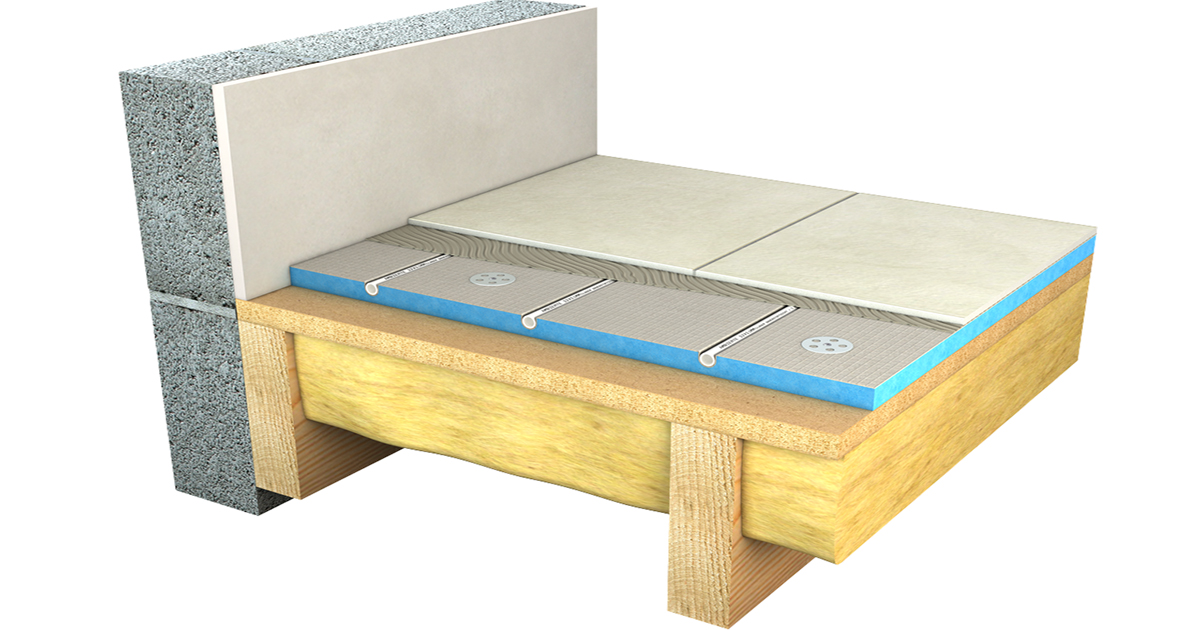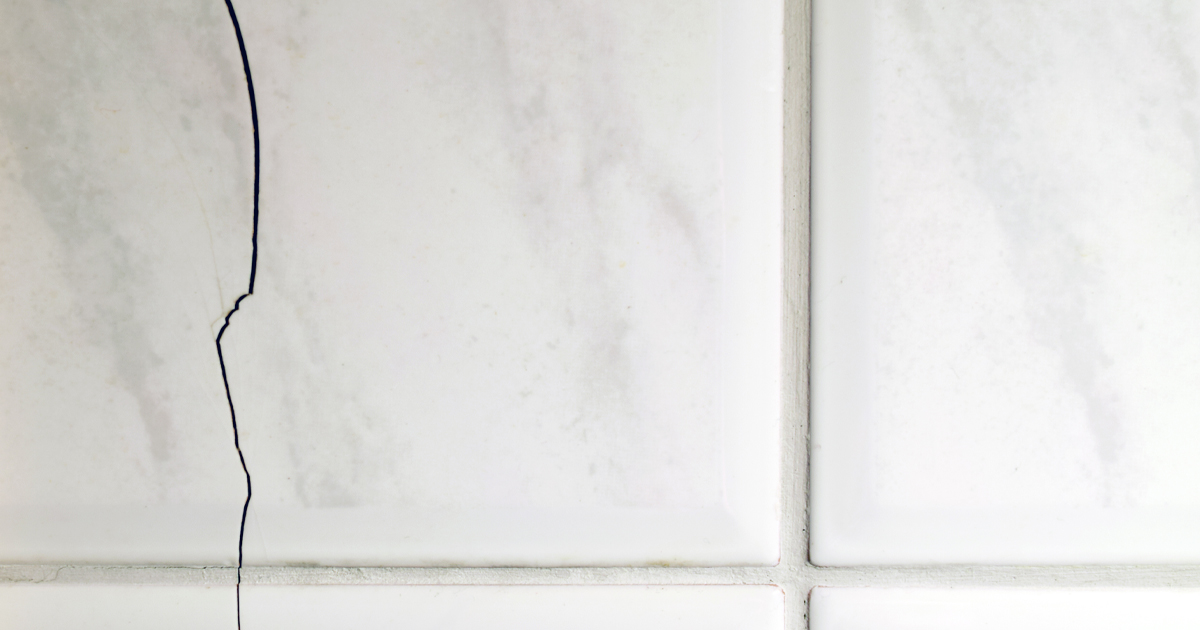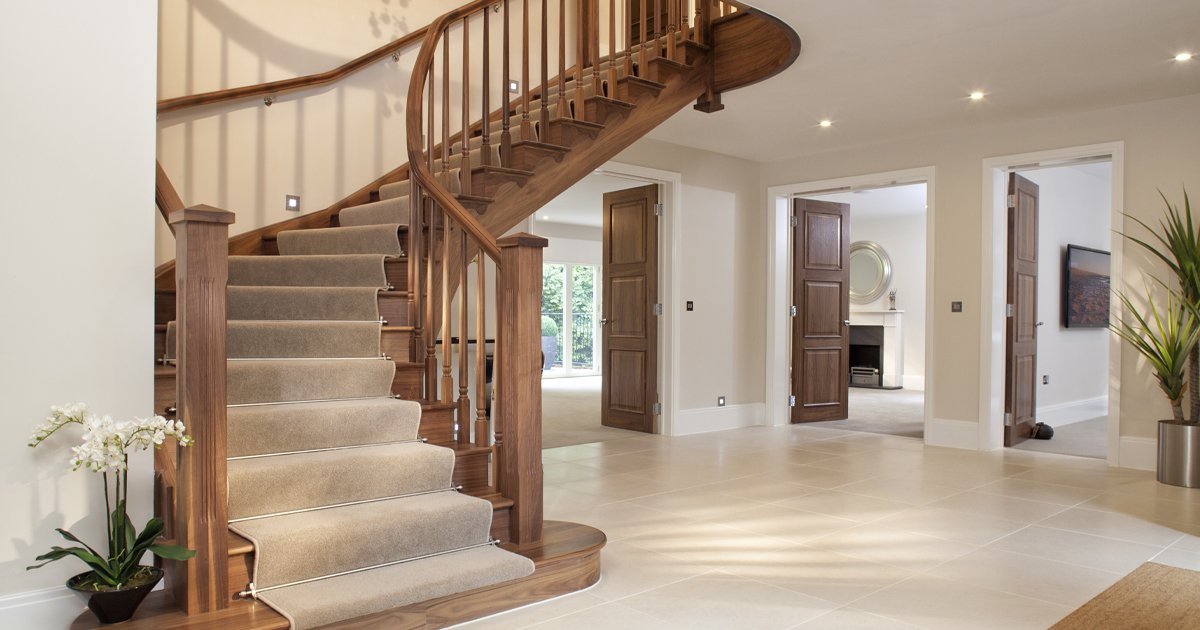Retrofitting UFH: The Best Way to Tile Over Underfloor Heating

A retro-fit underfloor heating system answering all of the challenges!
When advising on retrofit underfloor heating systems, there is a continual trade-off of parameters – on the one hand, there is a requirement to keep the system as slim as possible to minimise loss of floor-to-ceiling height. While on the other hand, there is a drive to incorporate some insulation, to maximise heat output and minimise downward heat loss. And finally, can tile be laid directly over the system?
Enter, AmbiDeck® – designed exclusively by Ambiente Systems UK, this new system incorporates an insulation layer within a low-profile UFH system – combining a low-profile system with excellent performance and the ability to lay tiles directly over!
AmbiDeck® consists of a high-density XPS insulation panel, 18mm thick. The face of the panel is cement-coated, making it rigid and durable. It is grooved to take 12mm UFH pipework, with a radius return grooved into each panel, making the panel universal. Additional pipework channels can easily be routed/grooved into the panel.
AmbiDeck® must be laid onto a flat and level subfloor, which can either be concrete or timber-based. Over a concrete floor, we recommend laying the AmbiDeck® panels over a combed layer of flexible tiling adhesive. Over a structural timber floor, panels should be fixed down with AmbiDeck fixing washers, approximately 6 per board.
Tiles and wood flooring can be laid directly over this system. Other finishes such as carpets or vinyl will typically require an intermediate board layer prior to the finish being installed.
What are the common problems with tiling over wet underfloor heating?
The main challenge underfloor heating installers face is creating a surface which is flat and stable enough for tiles to be laid over.
Any undulations or issues with the subfloor can easily result in issues, where the imperfections in the subfloor are carried through to the final surface. In the worst case scenario, with instability and even movement in the floor, the tiles could end up cracking. Tiles can expand at a different rate to screed and adhesives and this causes stress between the tiles and the adhesive.
Another issue with tiling directly over underfloor heating is the weakening of grout and adhesive if the underfloor heating system is turned on too soon. This is because the adhesive needs to be allowed to cure. Turning on the system too soon will cause the adhesive to dry up too quickly, which will make it weak.
Can you tile over tiles that were installed over underfloor heating?
If tiles have already been installed over underfloor heating it would be risky to attempt to remove them, because you could potentially damage the underfloor heating system underneath. It would be possible to tile over the existing tiles without affecting the output too much if you are using tiles with good thermal conductivity, however, most tiles are ceramic which is more of an insulator. Unfortunately, in most cases where tiles already exist over underfloor heating, to change the tiles you would have to strip them and the underfloor heating system and replace both. So it’s important to pick the right tiles the first time!
What are the maximum floor surface temperatures for tiles?
According to guidance from British Standard European Norm (BS EN) 1264 Water based surface embedded heating and cooling systems, the maximum floor temperatures for ceramic tiles are:
Occupied areas: 29°C
Bathrooms: 33°C
Peripheral areas: 35°C
These maximum floor temperatures are in place to provide a safe maximum, both for the building users, as well as the floor finishes.
Tiling over screed
Our tip for tiling over any screed is to make sure the screed is fully cured before turning on the underfloor heating. The amount of time you have to wait depends entirely on the screed you are using, it could range from a week up to a month. We would recommend speaking to the screed manufacturer to confirm their advice for each specific product. Ambiente’s screed heat-up guide gives a guide to the curing process.
How long before you can use underfloor heating after tiling?
You should wait at least 7 days after laying the tiles before switching on the underfloor heating and even then it’s best to start at a low temperature and incrementally increase it by a few °C each day until you reach the operational temperature. This is to give the adhesive time to cure and set properly before any heat is applied.
Frequently asked questions for tiling over wet underfloor heating:
Can I lay tiles over underfloor heating insulation panels?
If you attempt to lay tiles directly over plain underfloor heating insulation panels, the tiles will most likely crack as insulation panels are not designed for this use. AmbiDeck®’s cement-coated insulation boards are specifically designed to be durable enough for tiling to be laid directly over it.
How do you lay out floor tiles?
Check out this video by Tile Mountain to learn how to lay out floor tiles for a bathroom and a kitchen
Do I need to prime the boards prior to tiling?
With the AmbiDeck® system, this is not necessary as it uses a cement coated board. Just make sure the board is clean by wiping it down with a damp sponge or cloth.
What tile adhesive do you recommend?
Ambiente recommends the use of a flexible and reinforced tile adhesive, whenever tiling over underfloor heating. Many manufacturers will have a specific product that they recommend for this purpose.
Who supplies underfloor heating systems for Kitchens and Bathrooms?
Ambiente Underfloor Heating’s AmbiDeck® provides a low-profile underfloor heating system, which incorporates an insulation layer and can be tiled directly onto. This makes it perfect for bathrooms and kitchens.
Get in touch with our team today to discuss your next underfloor heating project! Simply call us on 01707 649 118 or email info@ambienteufh.co.uk.
If you are interested in learning more about underfloor heating and different floor types take a look at some of our other articles.
What should you consider before installing underfloor heating with an acoustic layer?
UFH insulation: what are your options?
This article was written by Robert Tuffin.
Robert is the General Manager at Ambiente and has been working in the underfloor heating industry since 2012. Robert has been heavily involved in the design and development of the new AmbiDeck system and has written for several industry magazines such as Heating and Plumbing Monthly.



